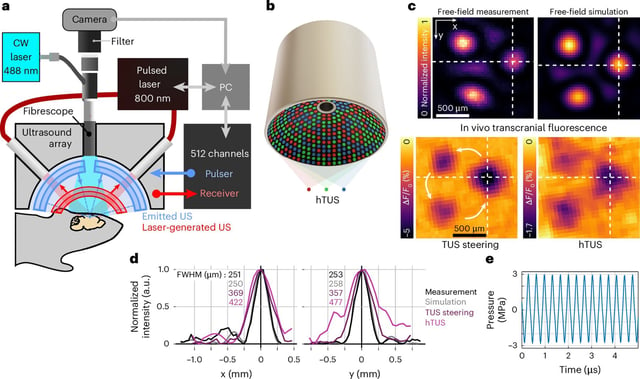Overview
- A July 7 Nature Biomedical Engineering study provided the first live-mouse evidence that holographically patterned, low-intensity ultrasound can activate specific neural circuits
- A helmet-shaped array of 512 ultrasound transducers projects precise sound holograms while a fiber-scope camera captures real-time fluorescence to map circuit responses
- Focusing on dispersed neural networks increased targeted neuron sensitivity tenfold compared with stimulation of isolated regions
- This low-intensity approach temporarily activates neurons without tissue damage, contrasting with FDA-approved high-intensity ultrasound that ablates brain cells
- The team is now adapting the technique for deeper and more complex brain regions, and early clinical tests of focused ultrasound neuromodulation have begun
